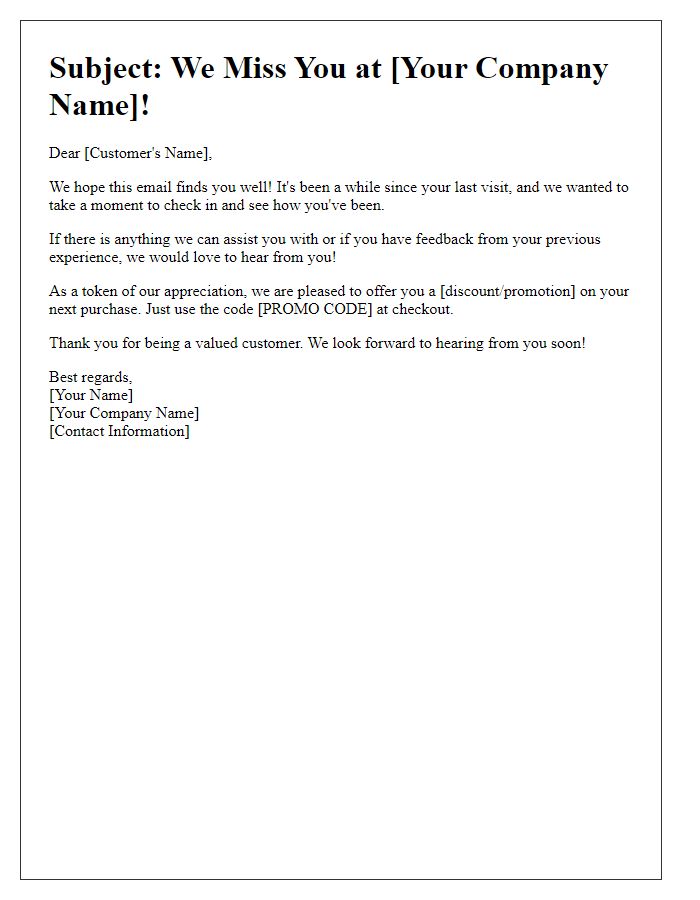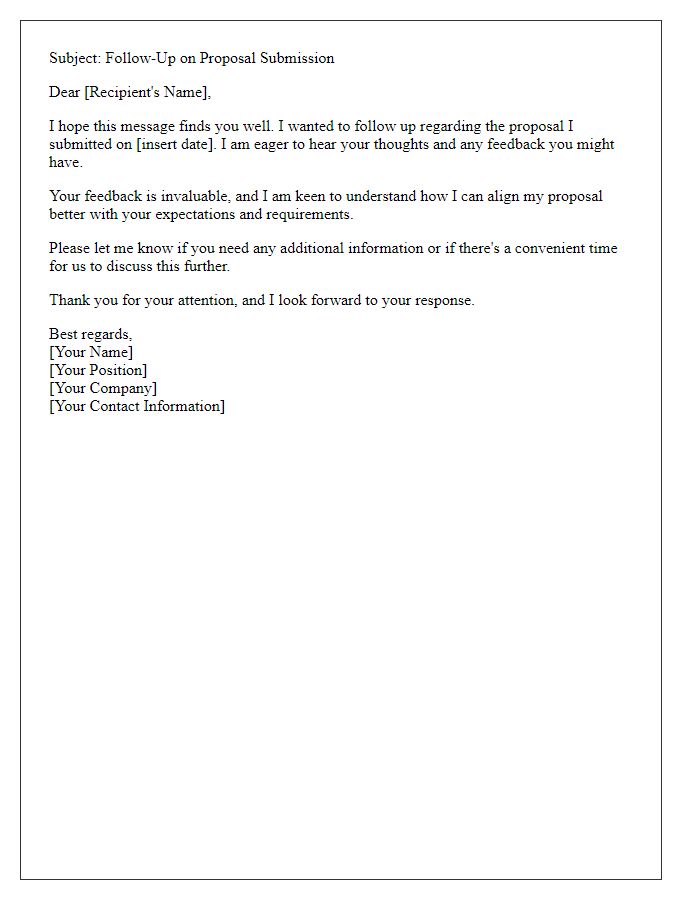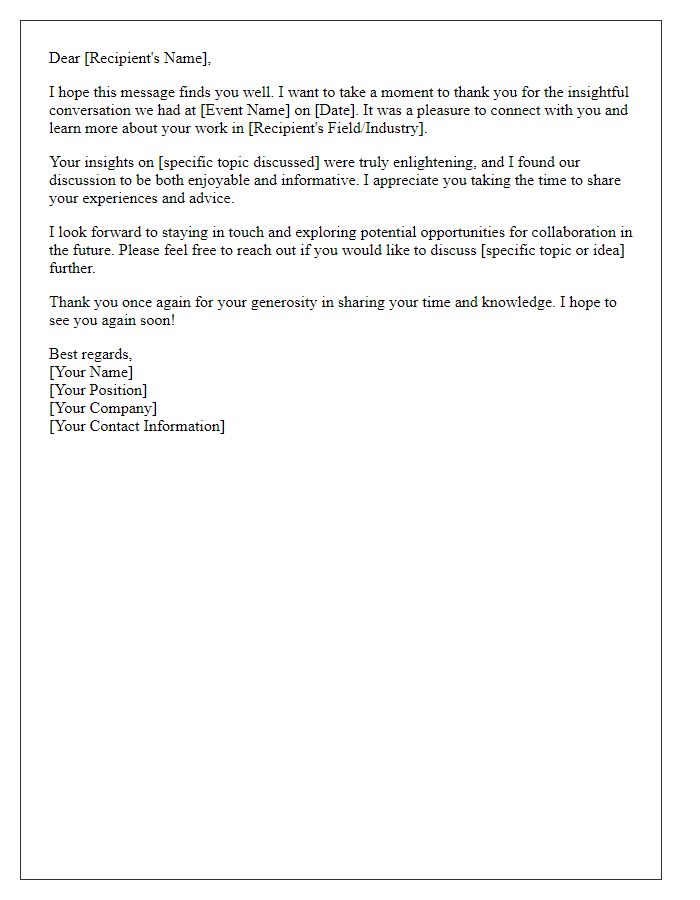Have you ever sent out a proposal and then found yourself anxiously wondering if it made an impact? Following up on your sales efforts can be a game changer, but crafting the perfect email can feel daunting. In this article, we'll share an effective letter template designed to help you reconnect with potential clients and spark their interest once again. So why not dive in and learn how to transform your follow-up strategy today?

Personalized Subject Line
A personalized subject line can significantly increase open rates for sales follow-up emails. Using the recipient's name or referencing a specific product can create a sense of connection. For example, "John, Discover How Our Solution Can Help Your Business Thrive" or "Follow-Up: Insights on Our Latest Product for Your Needs." Incorporating details such as the date of a previous meeting (e.g., "Following Up on Our Conversation from October 10") adds relevance. Highlighting the value or results (for instance, "Unlock Better Efficiency with Our Cutting-Edge Software") engages the recipient. Employing urgency or curiosity can further entice, such as "Don't Miss Out on Our Limited-Time Offer!
Warm Greeting and Personalization
Sales follow-up emails are essential in nurturing client relationships and boosting conversions. A friendly approach can significantly enhance engagement, especially if tailored to the recipient's preferences. Personalization, such as mentioning the client's name and specific interests discussed during prior communication, increases the likelihood of a positive response. For example, referencing the recent product demonstration of the cutting-edge software solutions might remind the client of its unique features, addressing their specific business needs. Including a call to action, like scheduling a call to discuss any questions or thoughts since the last conversation, can effectively guide the client towards taking the next step in the buying process. Elevating the email's tone with gratitude for their time reinforces a cordial atmosphere.
Recap of Previous Interaction or Offer
In the competitive realm of sales, a well-crafted follow-up email can significantly enhance customer engagement and retention. Following an initial interaction, the sales representative should summarize key points discussed, including specific product features, pricing details, and any unique selling propositions that resonate with the potential client. For instance, if the conversation touched upon a software solution's capabilities, emphasizing how it enhances productivity by automating repetitive tasks could reaffirm its value. Additionally, including a reminder of any limited-time offers, such as a 15% discount valid through the end of the month, can prompt timely decision-making. Personalization, such as addressing the recipient by name and referencing their specific business needs, can further strengthen the relationship. A direct call-to-action encouraging questions or scheduling a follow-up meeting can also facilitate next steps in the sales process.
Clear Call-to-Action
Sales follow-up emails play a crucial role in maintaining momentum after initial contact with potential clients. Personalization is key; addressing the recipient by name enhances engagement. Specifying previous interactions, such as a product demonstration on October 5th, adds relevance. A clear call-to-action is essential, whether requesting a follow-up meeting to discuss pricing details for the XYZ software or encouraging feedback on a proposal sent on September 28th. Incorporating a deadline, such as suggesting a response by the end of the week, creates a sense of urgency. Additionally, including a direct link to schedule a meeting or a phone number for immediate contact facilitates prompt communication, increasing the likelihood of a positive response.
Professional Closing and Contact Information
Follow-up emails after a sales meeting can significantly impact closing deals. Effective follow-ups demonstrate professionalism, reinforce connections, and provide opportunities for addressing any concerns. Including a clear closing statement enhances the message. For example, a closing statement like "I look forward to your feedback" encourages responses and keeps the conversation alive. Additionally, including contact information such as phone numbers, email addresses, and professional social media profiles ensures recipients can easily reach out for further discussions. Clear visibility of this information positions the sender as approachable and eager to assist.













Comments